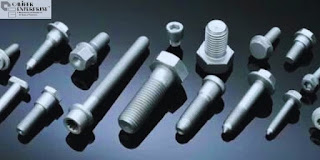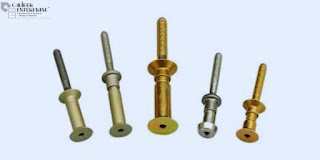From Loose to Tight: Tips for Properly Securing Fasteners
Fasteners, whether screws, bolts, or nuts, serve an important function in holding everything from furniture to industrial gear together. However, incorrect installation can result in loose connections, weakened structural integrity, and possible safety risks. This tutorial provides simple suggestions for ensuring your fasteners are securely fastened, hence increasing the durability and lifetime of your projects. At Caliber Enterprise you will get all types of fasteners according to your needs. We are one of the leading Fasteners Manufacturers in India.
Tightening Nuts and Bolts
Tightening fasteners are likely to be required while working on a home project or an automotive repair job. Before you begin, gather the appropriate tools and make sure they are free of trash and damage. You may secure your nut and bolt in place using several tools, including:
Adjustable wrench
Impact driver
Ratchet wrench
Torque wrench
Types of Fasteners
How to tighten your Nuts and Bolts
An electric power tool, such as an impact drill, will supply you with additional torque and accelerate your tightening process. Hand tools are frequently less expensive and more flexible, but they can only tighten nuts and bolts to the extent that you can physically spin the tool.
If you want to tighten by hand, support the bolt with a wrench in your non-dominant hand while fitting another wrench over the nut and sinking it clockwise. Finish with a quarter spin to ensure it stays in place. Using a power tool, use pliers to stabilize the nut, then put the socket over the bolt head and push the trigger periodically to secure it in place.
Whatever method you use, you should avoid overtightening your nuts and bolts. Over-tightening, or over-torquing, may subject your threaded fasteners to excessive stress, compromising bolt strength and leading them to fracture and shatter.
Use the Correct Tools
Choosing the correct tool for installing your fastener is just as important as picking the fastening itself. A screwdriver or drill that fits the fastener head appropriately reduces the danger of stripping it and improves torque control. When using a wrench for bolts and nuts, ensure that it fits snugly. This accuracy keeps the tool from sliding and harming the fastener or the surrounding material.
Conclusion:
Understanding the characteristics of your materials, selecting suitable fasteners and equipment, and following these installation instructions can guarantee that your fasteners are tight and secure. Proper fastener placement not only keeps your project together but also increases its durability and safety. Whether you're a DIY enthusiast or a professional, keep in mind that the smallest details can often be the most important.
Product Source: Fasteners Manufacturers
Also, Visit: Fasteners Manufacturers in Bangalore
.jpg)

.jpg)
Comments
Post a Comment